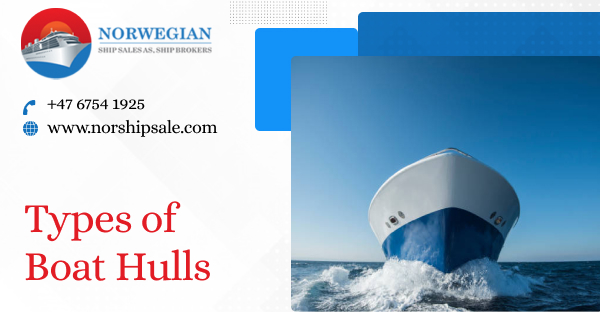Thinking about buying a ferry? Boats and ferries come in various shapes and sizes, just like hull designs. The hull part of a boat displaces water while sailing and is one of the most important aspects of ship design. When looking at fast ferries for sale, one must take a look at the hull design of the ferry. The hull shape and design can affect the speed of a vessel and determine whether it can be taken out in rough waters. In this blog, we discuss the different types of hull designs and their features.
1. Displacement hulls
Boats with displacement hulls are round on the bottom. They plow through the water with very little speed. These boats move steadily and smoothly on the water as it gently rolls along the waves. They use small propulsion units, and thus, move along quite slowly. They tend to use relatively more fuel to displace the water out of its way.
2. Planing hulls
Boats with planing hulls move at a higher speed as they ride on top of the water. Planing hulls come in a variety of shapes, from round bottom to flat bottom to V-shaped bottom. These boats do not plow through the water like displacement hulls, but are designed to glide across the water as they move in a much faster speed. These boats also use lesser fuel. But they offer a rough, unstable ride as the boat bounces on top of the waves.
3. Flat bottom hulls
Flat bottom hulls are typically found on smaller fishing boats suitable for calm water bodies such as lakes, ponds, and slow rivers. Boats with flat bottomed hulls have a shallow draft. They prove to be a stable ride in calm weather, but tend to get very unstable in rough weather conditions as the flat bottom crashes against each wave.
4. Round bottom hulls
Boats with round bottom hulls are specially designed to move through the water at a slow speed with little effort. Typical examples of round bottom hulls include a kayak or canoe. They provide a soft, smooth ride on calm waters. But they do tend to roll or capsize. This is why they often come with a deep keel or stabilizers.
5. V-shaped hulls
V-shaped bottoms are the most common hull design used for modern boats today. They are designed to cut through the water sharply and provide a smoother ride at high speeds even on rough waters. Common examples include fiberglass motorboats or powerboats. These boats are usually outfitted with a larger engine, but they require more power to move at the same speed as flat bottom hulls. V-shaped boats have a shallow draft, making them suitable for fishing in calm waters. At the same time, the deep V design allows them to cut through choppy waters at high speeds. It can sometimes roll or bank in sharp turns.
6. Multi hulls
If you’re looking at fast ferries for sale, boats with multi hull designs are going to be your most obvious choice. This includes catamarans, trimarans, and pontoon boats. These boats provide greater stability on water thanks to their wider stance. The two or more hulls make it easier to cut through the water and allows for better speed. Multi hull boats need more room when turning or steering.
Conclusion
When it comes to purchasing a ship, it is best to consult the experts. Get in touch with Norwegian Ship Sales for a consult today!


